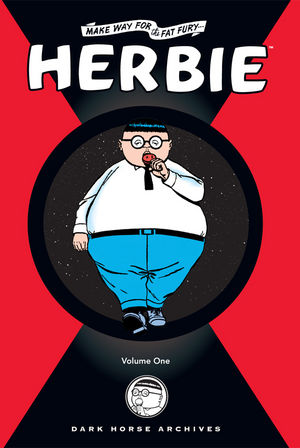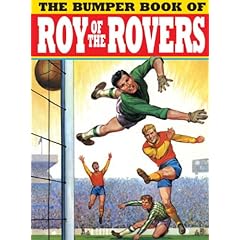 Viz released the last episodes of Rumiko Takahashi's One Pound Gospel in English for the first time this month. This series, with three or four new installments released every couple of years over a two decade run, has long been overdue for a proper digest edition with the artwork in its original configuration. In the mid-90s, Viz released three collections in their old graphic novel format, but let those go out of print. Now the series, which finally concluded in 2007, is available in full in four digests.
Viz released the last episodes of Rumiko Takahashi's One Pound Gospel in English for the first time this month. This series, with three or four new installments released every couple of years over a two decade run, has long been overdue for a proper digest edition with the artwork in its original configuration. In the mid-90s, Viz released three collections in their old graphic novel format, but let those go out of print. Now the series, which finally concluded in 2007, is available in full in four digests.It's an incredibly cute and occasionally hilarious comedy about a weak-willed boxer named Kosaku who cannot stop his unhealthy eating habits, and can't get over his doomed crush on an attractive young nun who sees a spark of potential in him. Kosaku kind of radiates between a hopelessly ingratiating dimwit and the great underdog hero for whom you'll enjoy cheering in the ring, and his supporting cast, notably his long-suffering coach, provides endless fun. Sister Angela, meanwhile, has her own (quite small) supporting cast, notably the mother superior who understands neither boxing nor Sister Angela's support of this clumsy young fighter.
It's a delightful comedy of errors and manners, with excellent artwork and hilarious moments. Possibly the best is a great five-part story in the third volume, in which everybody misunderstands everybody else and a rival boxer with an awful intestinal problem that keeps forcing his matches with Kosaku to be postponed conspires to make everybody's situation unbearable. It's really great stuff, and you should definitely look into it!
Read more of what I've written about Rumiko Takahashi at A Journal of Zarjaz Things.
Read other reviews of One Pound Gospel:
Ai Kano at Animanganation
Greg McElhatton at CBR
Pop Culture Shock
Greg Hackman at Mania.com
Connie at Slightly Biased Manga
In related reprinting news, Pat Mills is interviewed about the classic Charley's War, which he wrote for Battle Picture Weekly in the early 80s, over at Comicon.
Titan is planning two Modesty Blaise books for 2009: The Lady Killers in April and The Scarlet Maiden in October.
Here's some more information about the forthcoming collections of Steve Ditko's The Creeper and Sergio Aragones' Bat Lash, planned for June and July 2009:
SHOWCASE PRESENTS: THE CREEPER TP
Writers: Steve Ditko, Don Segall, Dennis O'Neil, Bob Haney, Len Wein and Michael Fleisher
Artists: Steve Ditko, Neal Adams, Dick Giordano, Mike Peppe, Jack Sparling, Dick Dillon, Sid Greene, Irv Novick, Ernie Chua, Jose Luis Garcia-Lopez and Mike Royer
Collects: SHOWCASE #73, BEWARE THE CREEPER #1-6, THE BRAVE AND THE BOLD #80, JUSTICE LEAGUE OF AMERICA #70, DETECTIVE COMICS #418, 447 and 448, THE JOKER #3 and 1ST ISSUE SPECIAL #7
$9.99 US, 296 pages
SHOWCASE PRESENTS: BAT LASH TP
Writers: Sergio Aragones, Dennis O'Neil, Nick Cardy, Len Wein and Cary Bates
Artists: Nick Cardy, Mike Sekowsky, George Moliterni and Dan Spiegle
Collects: SHOWCASE #76, BAT LASH #1-7, DC SPECIAL SERIES #16 and stories from JONAH HEX #49, 51 and 52
$9.99 US, 240 pages
(Originally posted December 19, 2008, 12:35 at hipsterdad's livejournal.)















































